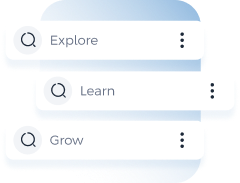
Refine Your Search
...
Explore Financial Academy
About the Academy
Discover our Rich, 60-Year Journey
Jadarat
A Comprehensive System for Skill and Knowledge Development
Governance
Meet our Inspiring Leadership
Success Stories
Check out our Clients’ Reviews and Testimonials


...


Register now for financial analysis, planning, and forecasting skills.
This program is designed to equip participants with basic knowledge and skills necessary to effectively analyze financial statements, by understanding how to extract and utilize key financial indicators to accurately evaluate the performance of the enterprise. The program aims to enable participants to apply these indicators in strategic decision-making and develop future policies that enhance financial performance efficiency and achieve long-term objectives.
Banking
Capital Market
Insurance
Financing
Accounting and Finance
Not Exist
Lecture
Brainstroming +2
Lecture
Brainstroming
Dialogue Teams
Exercises and assignments
Pre Exam
Post Exam
All Financial Sectors
This provides you with the opportunity to select the available times that suit you best for participation in our program. These times represent slots during which we are ready to welcome you and provide assistance and guidance.
In Class Training-Online Training
The financial system concepts and its contents
The main objectives of financial system.
The modern concept of accounting information system
The outputs of accounting information system
Practical cases
In Class Training-Online Training
Financial Analysis concept and objectives
Sources of the firm economic events information
In Class Training-Online Training
Liquidity Ratios
Profitability Ratios
Activity Ratios Debit Ratios
Market Ratios
Financial Leverage
Operating Leverage
Financial failure Indicators
Financial Failure forecasting models
Brake-even analysis
Cash flow analysis
In Class Training-Online Training
The corporate planning model (shareholders- management- stakeholders)
Analysis of the components of the operating / cash cycle
Fundamental Financial Analysis
Investment Analysis
In Class Training-Online Training
Financial planning concept, objectives and components
The: Vision, Mission and Strategy
Types of financial plans
Financial forecasting methods
Estimating cash flow
Knowing the components of financial statements, their accuracy and their level of reliability to achieve high accuracy in financial forecast.
Acquiring the skills needed to prepare the financial plans using the best methods.
Identify financial analysis tools to extract financial indicators.
Using financial indicators to evaluate the organization’s performance and predict its future performance.
